Ever wondered when Spaniards eat breakfast? And what about lunch or dinner? Spanish mealtimes can be confusing, but this guide will show you exactly when (and what!) to eat throughout the day in Spain.

If you're from someplace like the US, chances are your stomach will start rumbling around noon. If you were back home, it would be lunchtime.
But here in Spain, noon is an eating dead zone. It's too late for morning coffee and Spanish pastries but too early for lunch. In fact, most restaurants won't even start cooking for another hour and a half!
The conundrum of when to eat in Spain is nearly as tricky as figuring out the difference between the dozens of types of Spanish cured meats. It may also be one of the most important questions you can ask before coming to Spain.
Getting Spanish mealtimes wrong means relegating yourself to tourist-trap restaurants or reheated bar food. Getting them right means stepping into a world of culinary delight.
Here's a breakdown of when we eat throughout the day in Spain, what we eat at each meal, and what kinds of dining establishments to head to for each.
Breakfast #1: 7–9 AM
Don't expect to see any big desayunos (breakfasts) in Spain. There are two morning meals here, and the first is quite small. In fact, many people in Spain skip their first breakfast altogether, opting instead for only a quick cup of coffee or warm chocolate milk before heading out the door for work.
This early in the morning, breakfast options for those of us that do start the day with nourishment are limited almost entirely to carbs.
Some typical Spanish breakfast foods for the first meal of the day include:
- Croissants (plain, buttered, or filled with chocolate, cream, or jam)
- Other pastries such as Mallorcan ensaimadas
- Any number of sweet baked goods (cookies for breakfast, anyone?)
- A small bowl of cereal
That starchy goodness is typically washed down with one of Spain's many different coffee drinks (café con leche is a popular choice) or a glass of freshly squeezed orange juice.
Where to eat it: Most Spanish people eat their first breakfast at home. If you're visiting and need to eat out, this is a great time to stop by a bakery or pastry shop to pick up something sweet and quick.

Breakfast #2: 10–11 AM
By the time mid-morning rolls around, it's time for the second Spanish mealtime and something a bit heartier. Depending on where you are in Spain, you may hear this meal called desayuno (just like the first breakfast) or almuerzo.
For working adults this morning snack almost always involves another coffee or perhaps a juice. In Catalonia, it's not uncommon to drink cava for breakfast, too!
The food options are a bit more filling, making this second breakfast the perfect way to bridge the gap between the first morning meal and Spain's famously late lunch.
Some common choices for breakfast #2 in Spain include:
- Simple magdalenas (muffins flavored with citrus and olive oil)
- Toasted bread with tomato, olive oil, and (sometimes) cured ham
- A slice of tortilla de patatas—a common choice in Madrid and northern Spain, and the only time you'll see eggs as a breakfast option!
- Any number of sandwiches, from the Catalan entrepà de botifarra stuffed with local sausage to Andalusia's bite-sized montaditos de pringá made with the leftovers of the previous day's pork stew
Where to eat it: At this time of day, many Spaniards will head to their local café-bar (a sort of cross between the traditional Spanish bar and a coffee shop). Until about 11 a.m. you'll find them bustling with office workers and newspaper-reading old men.

Lunch: 2–3:30 PM
The third (and arguably most important) of all Spanish mealtimes cannot be missed. Lunch is such a big deal in Spain that in many places it's simply called la comida (literally "the meal") as if it's the only meal that actually counts as food.
Spanish lunchtime is food paradise. Most restaurants open for lunch around 1:30 p.m. and the crowds start pouring in around 2 p.m. On weekends, tables will stay full until well past 4:30 as friends and family keep talking long after the meal is over, a custom known as sobremesa.
A few common staples you'll see on Spanish lunch menus include:
- Hearty stews like cocido madrileño, beef stew, or rabo de toro (bull tail stew)
- Rice dishes such as paella and arroz caldoso (soupy rice, often made with seafood)
- Chicken dishes like pollo al chilindrón (chicken and pepper stew) and pollo en pepitoria (chicken in almond sauce)
- Lentils in any form, from the traditional lentil soup with chorizo to fresh and modern Spanish lentil salad
- Creamy and refreshing salmorejo
- Tuna pasta in tomato sauce
Where to eat it: This is the time to head to a sit-down restaurant, the vast majority of which offer a menú del día, or fixed-price lunch special.
This set menu typically offers three to six options each for both a first course and a second course. Those two courses plus bread, a drink, and either dessert or coffee have a set price of about €10–16 in Madrid and even less in smaller cities and towns.
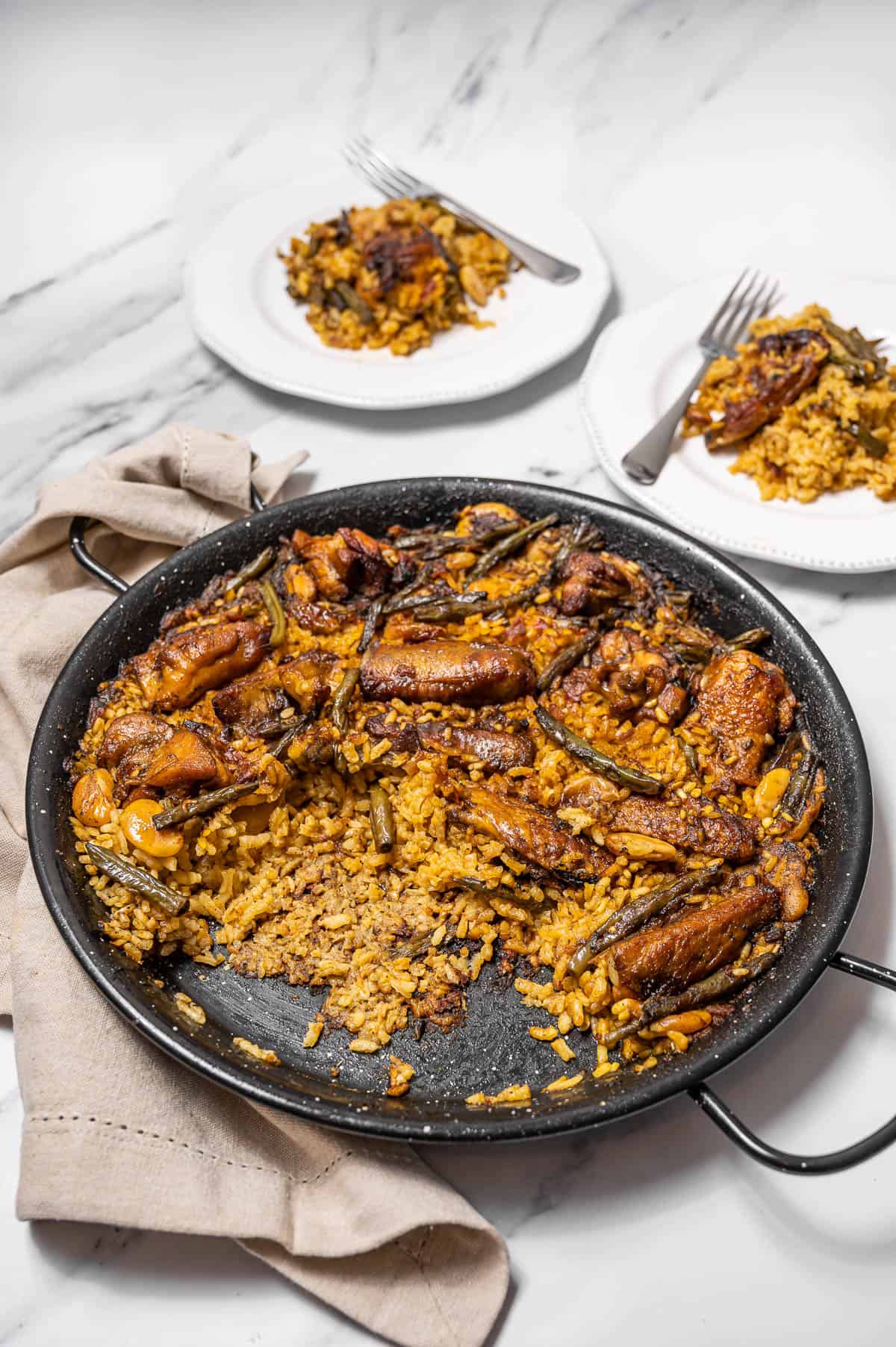
Merienda (Mid-Afternoon Snack): 5–6:30 PM
Merienda, the fourth Spanish mealtime, is a mid-afternoon snack that can help tide you over between lunch and dinner. The social element of merienda is just as important as the food itself. This is the time when friends meet to grab a coffee and abuelas gather in cafés to gossip.
This snacking period is practically sacred among Spanish kids. As people get older, they may not always have the option to merendar every day (especially during the work week). That said, it's still a beloved custom that many Spaniards enjoy whenever they can!
The fare for the mid-afternoon snack is usually sweet, but there are some savory options as well:
- Churros with thick, rich hot chocolate
- Snacking cakes, known as bizcochos. These are baked with olive oil and often yogurt as well. Common flavors include lemon, apple, and chocolate.
- Fruit tarts or simply a piece of fresh fruit
- Donuts fried in olive oil and dusted with sugar
- A small sandwich
- A plate of Spanish cheese
Where to eat it: You can enjoy merienda at a café or bakery, or even at a bar!
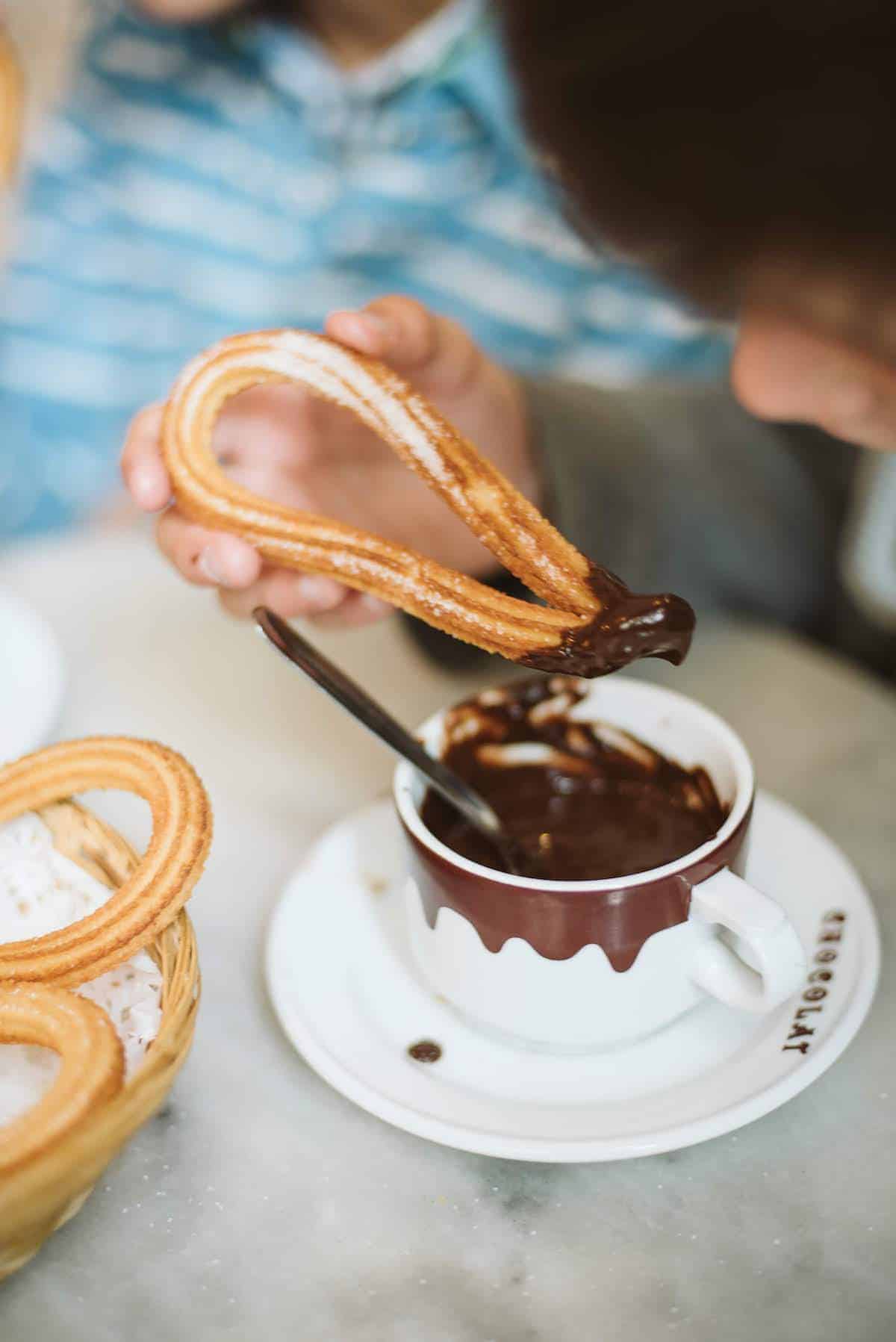
Aperitif & Tapas: 8–10 PM
The real fun of eating in Spain begins later in the evening, when the sun dips below the horizon and the tapas and pintxos bars begin to open. In many parts of Spain, people will enjoy a quick bite and drink to open their appetite before dinner. This is known as an aperitivo (aperitif).
A word of caution: It's difficult to find authentic Spanish dinner food before 8:30 p.m. At the typical American or British dinnertime of 6–8 p.m., few—if any—kitchens at sit-down restaurants are open. Instead, this is prime tapas time.
Going for tapas can range from one quick drink before dinner to spending the entire evening going to three or four bars and having some tapas at each. People often eat tapas standing up at the bar rather than at a table.
While the size, style, and price of tapas vary from region to region, in many parts of Spain it's common to get a free tapa when you order a drink. This is often simply a small dish of olives or potato chips. However, in some cities like Granada, it's common to get a small cooked dish!
In other cities, like Seville and San Sebastian, tapas (or pintxos) usually cost around €2–6. These tend to be larger or more elaborate than the free tapas served in other parts of the country.
If you're headed out for tapas in Spain, here are a few typical options you might dig into:
- A dish of delicious Spanish olives
- Cured meats and cheeses
- High-quality Spanish canned goods
- Flavorful grilled pork skewers
- Chorizo cooked in red wine
- Garlic shrimp (gambas al ajillo)
- Carrots marinated in vinegar and spices
- Patatas bravas topped with their signature spicy sauce (and sometimes alioli as well)
- In the Basque Country, the local version of tapas are called pintxos. Some popular pintxos are gildas, goat cheese with caramelized onion, and anchovies. Pintxos are often skewered together with a toothpick and/or served on top of bread.
Where to eat it: Head out to your nearest tapas or pintxos bar to enjoy a Spanish aperitivo. You can simply stay there and enjoy one drink and a tapa, or go barhopping for a full tapas feast!
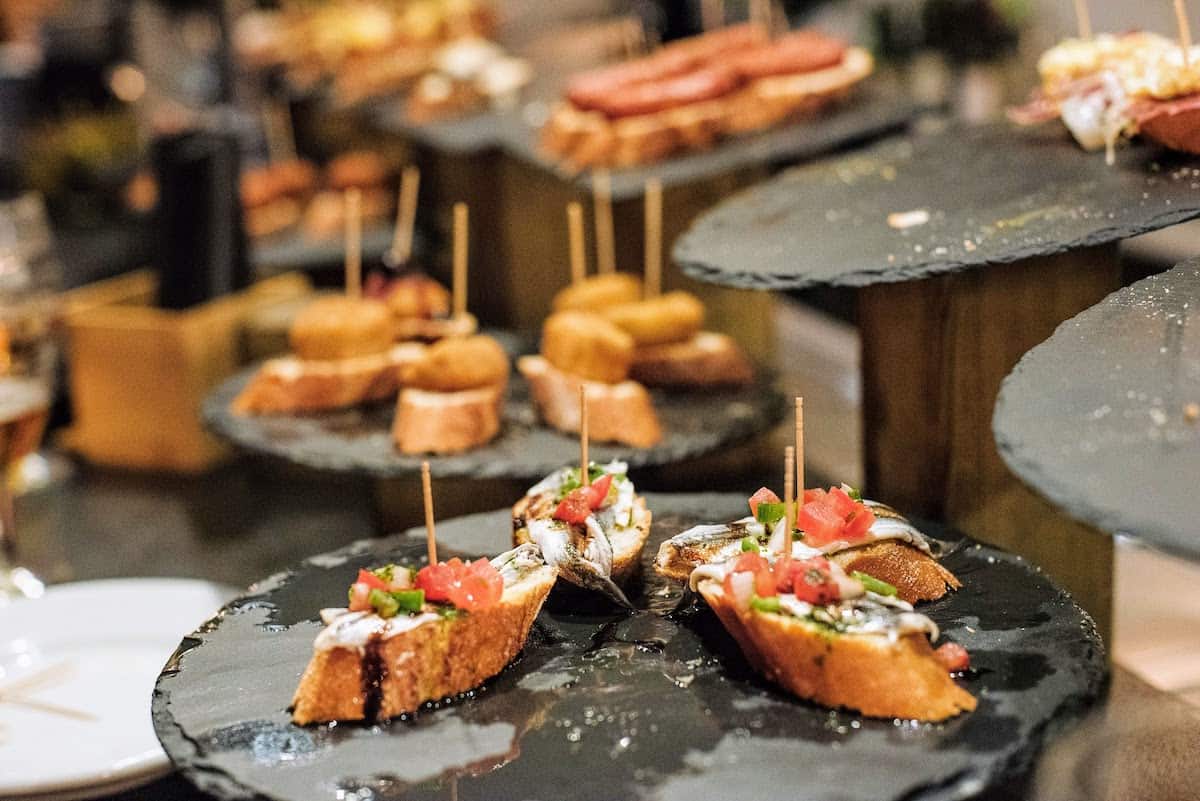
Dinner: 9–11 PM
Dinner in Spain may be late, but as with all Spanish mealtimes, it's definitely worth waiting for.
Cena, or dinner, is usually much lighter than it would be in many other countries. If eaten at home, a Spanish dinner often consists of a salad; a plate of cured ham, sausages, or aged cheese; or even just yogurt and a piece of fruit.
Restaurant and bar dinners are another story. While there are certain foods that you'll almost never find on dinner menus—pasta, rice, lentils, or lamb, for example—Spain has a huge variety of dinner options. For example:
- Tortilla de patatas, Spain's ubiquitous potato omelet
- Huevos rotos, a dish of fried potatoes topped with fried eggs that are then "broken" to let the yolk spill over the whole thing
- Croquettes made with ham, potato, salt cod, or pretty much anything else!
- A simple and delicious salad
Where to eat it: If you're eating out in Spain, you can head to a restaurant for dinner—or simply continue your tapas crawl across various bars!
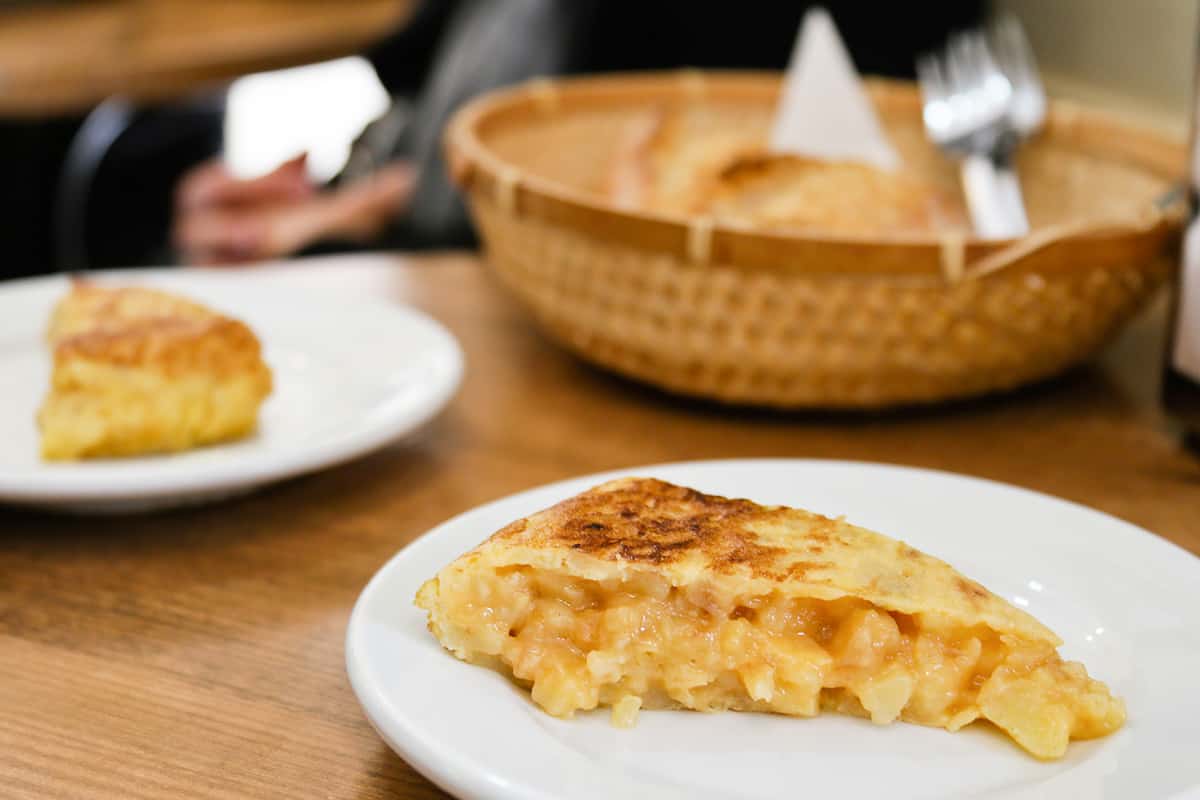
Spanish Mealtimes FAQs
Spain's famously late mealtimes are due to the fact that the country has been geographically in the wrong time zone since World War II! After the time zone changed, Spaniards kept eating at the same time with regard to the position of the sun in the sky.
Previously, lunch would have been around 1 p.m. and dinner around 8, but since the country moved forward an hour, those times are now 2 and 9 p.m., respectively. (Interestingly, 1 and 8 p.m. are the common mealtimes in Portugal—which is in Spain's original time zone.)
Most people in Spain eat between four and six meals per day, though it can vary depending on the location and everyone's individual schedules.
These Spanish mealtimes typically include a light bite and coffee first thing in the morning, a more substantial "second breakfast," a hearty lunch, a mid-afternoon snack or merienda, tapas or an aperitif, and a light dinner.
Many people in Spain actually eat two breakfasts! The first is usually something light and sweet, such as a pastry or cookies. The second breakfast, eaten around mid-morning, is often toasted bread with tomato and olive oil, a slice of potato omelet, or a small sandwich.
Merienda is Spain's mid-afternoon snack. It's typically enjoyed between 5 and 6:30 p.m., but can be eaten at any time between lunch and dinner.
Hungry for more? Sign up for my free weekly newsletter and receive a new Spanish recipe once a week! Join today and get my FREE Spanish ingredient essentials guide!


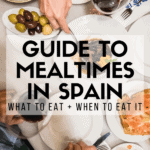
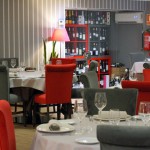




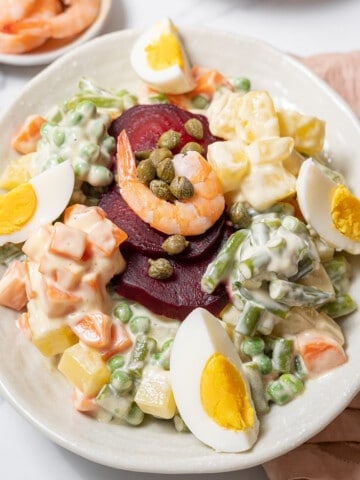
Bea adventurous
I love how you’ve included sooo many examples of yummy food. And I also love how you’ve given example times of when Spanish people usually have these meals! It’s super helpful for tourists, especially if they’re wandering around looking for lunch at 12-1!
Thanks for sharing your tips!
Nicholas Peters
As an interesting historical and literary point. JRR Tolkien appeared to use this for the basis of Hobbit Meal Times; sound odd !
7:00am – Breakfast.
9:00am – Second Breakfast.
11:00am – Elevenses.
1:00pm – Luncheon.
4:00pm – Afternoon Tea.
6:00pm – Dinner.
8:00pm – Supper.
Tolkien's adopted father was Fr Francis Xavier Morgan, a Welsh/Spanish Priest who frequently went on "Adventures" to his family in Seville. Fr Morgan was the inspiration for Bilbo Baggins.
Shannon
Great list! Do you know if this similar timeline goes for weddings in Spain, too? We're planning our wedding in Barcelona, and I'm not sure what the caterers, musicians, etc. will find "normal" 🙂 I'm also not sure our American friends and family will survive if we serve food at 9pm! haha. Thanks!
Lauren Aloise
Weddings can be even later! But really-- do what you want :). For context, my wedding began at 7:30 with the ceremony, around 8:30 was cocktail/aperitif hour, around 10pm dinner, and around midnight first dance and open bar began. Around 4am "snack time" (small sandwiches). We called it a night at 6am. Hope this helps!
Juan Herrero
Almuerzo means lunch. End.
Comida means "food", "meal", and may refer to any meal.
The second breakfast I would call just that, or coffee break. If I have a proper breakfast at home I will just have a drink (of coffee, juice, or maybe some tea), if I didn't, because I had to go to work early, or choose to get some more sleep, then it IS breakfast.
There are plenty of coffee shops which open early (or do not even close at all). You will not find those in fancy 9 to 2 office districts: They are at truck stops and service stations, on industrial areas (polígonos industriales), and in farming areas, where people have a valid reason to be awake at such ungodly
Juan Herrero
* hours.
Alberto
Eso será en tu pueblo porque en el mio almuerzo es eso, la pausa a media mañana. Yo veo todo correcto salvo lo del aperitivo que no tiene un horario, un aperitivo se toma cuando apetece sin más.
Sebastian
Indeed.
"Almuerzo" means "lunch" (at least in Andalucia and Madrid, thought it may be different in other regions and countries), and that second breakfast is usually called 'mid-morning break', or just breakfast (if there wasn't an earlier one).
Teresa
Almuerzo means:
- lunch in Madrid
- breakfast in Catalonia
- second breakfast in Valencia
Ernesto
Back home in Manila, I normally have my lunch at around 12 noon. But now that I'm in Madrid, and been staying here for more than a year now, I've learn to adapt their eating ways, and eat my lunch after 2PM.
Teddy Leranzo
This is excellent!! I must say I'm intrigued by your Spanish culture but it is quite queer the way you eat .. Weird
Roxanne
I'm 50, Spanish and live in Australia. I still eat this way, and I'm slender, fit and full of energy every day! Forget 3 meals and no snack. Eat well, fill up with real food and you'll see how healthy you become.
Denise
Thanks for the update.
Alba
As a Spaniard I must say you've nailed it! This is totally accurate and helpful for people that want to understand our culture!
I'm so going to share it!
Thank you
Lauren Aloise
Thanks Alba!
Ashley
Cute post! I'm going to send this to my little sister, to get her prepared for her trip here in July.
I remember the first time I came to Spain I thought I'd die before lunch time, I wish I'd known then about second breakfast!
Lauren Aloise
I know! I had a similar experience-- I never knew what to eat at 11am!